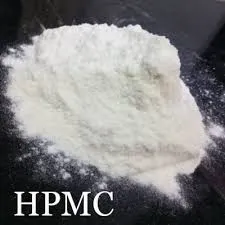
Novemba . 21, 2024 05:36 Back to list
hydroxypropyl methyl cellulose solubility
Understanding Hydroxypropyl Methyl Cellulose Solubility Properties, Applications, and Implications
Hydroxypropyl Methyl Cellulose (HPMC) is a cellulose ether widely used in various industries due to its unique properties, particularly its solubility characteristics. This semi-synthetic polymer is derived from naturally occurring cellulose and has gained popularity in fields such as pharmaceuticals, food production, construction, and cosmetics. Understanding the solubility of HPMC is crucial for its effective application and performance in these diverse sectors.
Properties of Hydroxypropyl Methyl Cellulose
HPMC is characterized by its ability to form gels and its film-forming properties, all of which contribute to its multifunctionality. Depending on the degree of hydroxypropyl and methyl substitution, HPMC can vary in viscosity and solubility in water. This variability is essential, as different applications necessitate specific performance attributes.
When in contact with water, HPMC swells and dissolves to form a clear, viscous solution that possesses excellent stability. The dissolution of HPMC in water is influenced by several factors, including its molecular weight, concentration, and temperature of the solvent. The varying solubility of HPMC grades allows formulators to customize the viscosity and behavior of the solutions for particular requirements.
Solubility Characteristics
HPMC is known for its high solubility in cold water, which differentiates it from other cellulose derivatives that may require heating to dissolve effectively. Upon mixing with water, HPMC undergoes a process of hydration wherein the hydrophilic hydroxyl groups attract water molecules, leading to the formation of a gel-like structure. This unique characteristic positions HPMC as an invaluable excipient in pharmaceuticals, where it’s used as a binder, thickener, and stabilizer.
The solubility of HPMC is also affected by the pH of the environment. While it is stable across a broad pH range, significant variations may alter its solubility, hence it's crucial to consider the intended application's conditions. Additionally, the ion concentration in the solution can influence its solubility; higher ion concentrations typically lead to decreased solubility due to osmotic effects.
hydroxypropyl methyl cellulose solubility

Applications of HPMC
1. Pharmaceuticals HPMC plays a pivotal role in drug formulation as a controlled-release agent. It allows for the gradual release of active ingredients over a prolonged period, enhancing therapeutic efficacy and patient compliance. Moreover, its solubility profile makes it an ideal candidate for tablet coating and as a bulking agent in formulations.
2. Food Industry HPMC is used as an emulsifier, thickener, and stabilizer in food products. It aids in improving the texture and mouthfeel of items like sauces, dressings, and ice creams. Its excellent solubility in cold water has made it a favored ingredient in dry mixes and instant food products.
3. Construction In the construction industry, HPMC is utilized in cement and mortar formulations to enhance workability. It improves the adhesion and water retention of mortars, ensuring better performance and longevity of construction materials.
4. Cosmetics HPMC is widely used in cosmetics and personal care products due to its thickening and film-forming properties. Its ability to form stable aqueous solutions makes it an essential ingredient in products ranging from lotions to hair gels.
Conclusion
The solubility of Hydroxypropyl Methyl Cellulose is a key factor that defines its performance and effectiveness across various applications. Understanding its properties allows formulators and manufacturers to leverage HPMC to its fullest potential, creating products that meet specific user needs. With ongoing research and advancements in technology, the versatility of HPMC continues to expand, ensuring its place as a fundamental component in numerous industries. As the demand for efficient, high-quality products rises, the role of HPMC in modern formulations will only become more prominent, underscoring its importance in shaping the future of material science and product development.
-
Versatile Hpmc Uses in Different Industries
NewsJun.19,2025
-
Redispersible Powder's Role in Enhancing Durability of Construction Products
NewsJun.19,2025
-
Hydroxyethyl Cellulose Applications Driving Green Industrial Processes
NewsJun.19,2025
-
Exploring Different Redispersible Polymer Powder
NewsJun.19,2025
-
Choosing the Right Mortar Bonding Agent
NewsJun.19,2025
-
Applications and Significance of China Hpmc in Modern Industries
NewsJun.19,2025







